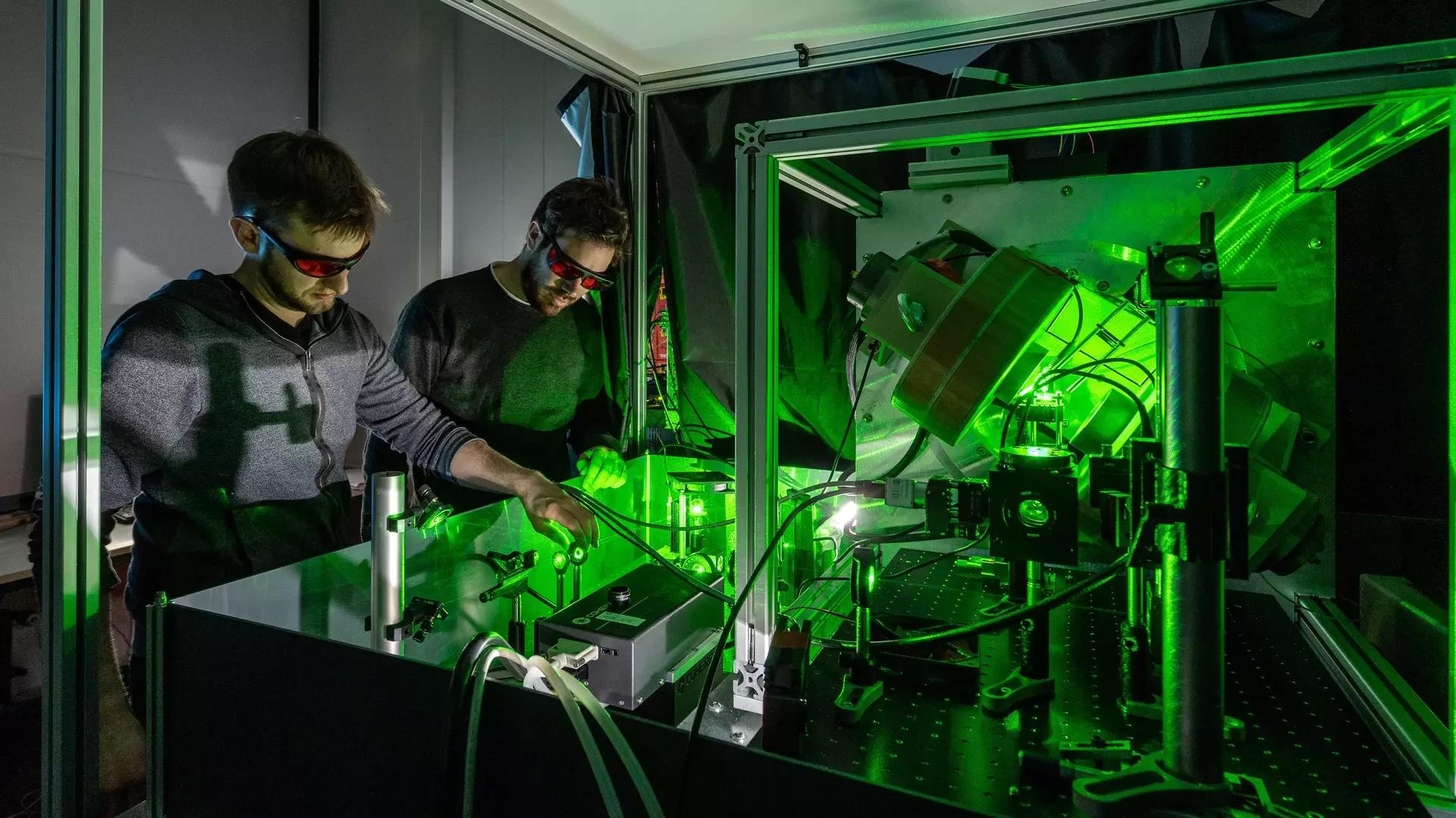Microscopic alterations inside the body’s cells initiate the development of cancers; ion diffusion at the smallest dimensions plays a critical role in battery performance. Conventional imaging techniques have not yet reached a resolution that allows for a detailed representation of these processes. Diamond quantum sensors, which could be used to increase magnetic imaging’s resolution, were created by a research team under the direction of the Technical University of Munich (TUM).
 Robin Allert (left) and Prof. Dominik Bucher are working on new quantum sensors. Image Credit: A. Heddergott/TUM
Robin Allert (left) and Prof. Dominik Bucher are working on new quantum sensors. Image Credit: A. Heddergott/TUM
One useful imaging technique for studying tissue and structures without causing harm to them is nuclear magnetic resonance (NMR). The procedure, widely known in the medical community as Magnetic Resonance Imaging (MRI), involves moving the patient into an enormous magnet’s bore on a table.
Strong magnetic fields produced by the MRI machine interact with the body’s hydrogen nuclei’s small magnetic fields. Differentiating between organs, joints, muscles, and blood vessels is made feasible by the specific distribution of hydrogen atoms among the many tissue types.
The diffusion of water and other elements can be seen using NMR techniques. For instance, research on the structures of enzymes or battery operations frequently includes tracking the behavior of carbon or lithium.
Existing NMR methods provide good results, for example when it comes to recognizing abnormal processes in cell colonies. But we need new approaches if we want to explain what happens in the microstructures within the single cells.
Dominik Bucher, Professor, Quantum Sensing, Technical University of Munich
Sensors Made of Diamond
For this objective, the study team created a synthetic diamond quantum sensor.
We enrich the diamond layer, which we provide for the new NMR method, with special nitrogen and carbon atoms already during growth.
Dr. Peter Knittel, Group Manager, Fraunhofer Institute for Applied Solid State Physics
Electron irradiation separates individual carbon atoms from the flawless crystal lattice of the diamond after formation. A so-called nitrogen-vacancy center is formed when the ensuing defects align themselves close to the nitrogen atoms. The unique quantum mechanical characteristics of these vacancies are essential for sensing.
Dr. Knittel added, “Our processing of the material optimizes the duration of the quantum states, which allows the sensors to measure for longer.”
Quantum Sensors Pass the First Test
Magnetic fields interact with the quantum state of nitrogen-vacancy centers.
Bucher stated, “The MRI signal from the sample is then converted into an optical signal which we can detect with a high degree of spatial resolution.”
The TUM researchers tested the technique by attaching a microchip to the diamond quantum sensor that had microscopic channels filled with water.
“This allows us to simulate microstructures of a cell,” Bucher further stated.
The analysis of the diffusion of water molecules inside the microstructure was accomplished with success by the researchers.
The next stage of the project will involve further technique development to allow the study of tissue sections, single live cells, and thin-film materials’ ion mobility in relation to battery applications.
The ability of NMR and MRI techniques to directly detect the mobility of atoms and molecules makes them absolutely unique compared to other imaging methods. We now have found a way, how their spatial resolution, which is currently often deemed insufficient, can be significantly improved in future.
Maxim Zaitsev, Professor, University of Freiburg
Journal Reference:
Bruckmaier, F., et al. (2023) Imaging local diffusion in microstructures using NV-based pulsed field gradient NMR. Science Advances. doi:10.1126/sciadv.adh3484